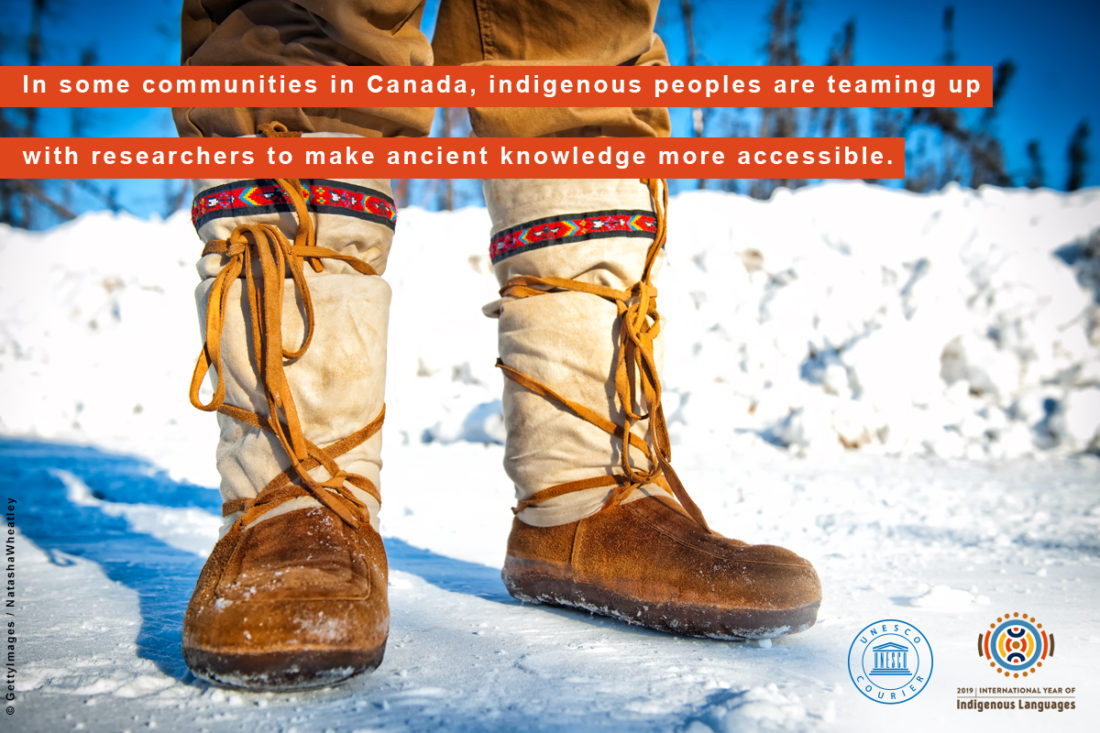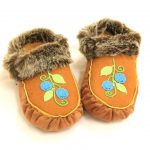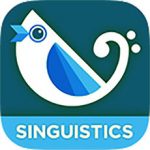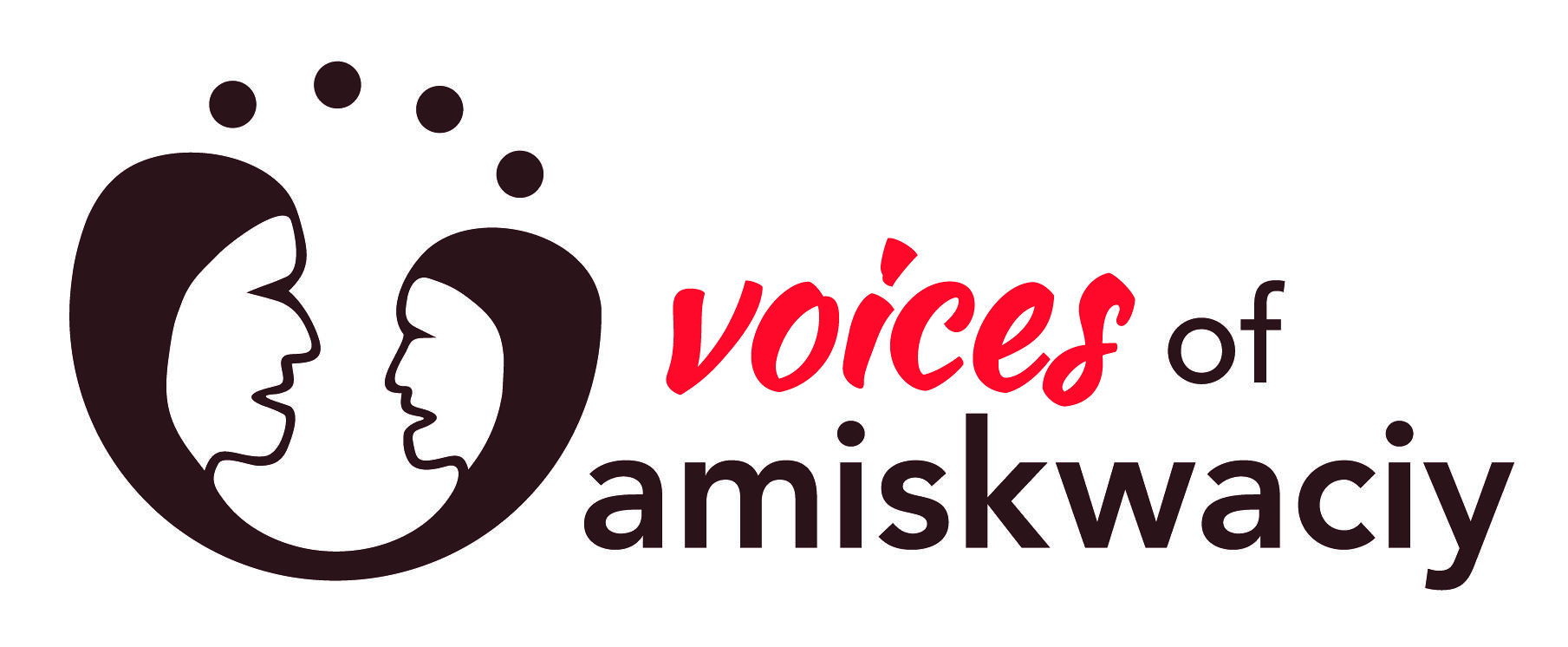Sam Hamilton is the former Web Content Administrator at the Edmonton Public Library.
To raise awareness about this growing concern, the United Nations has declared 2019 the International Year of Indigenous Languages.
So, what can you do to help?

Learn an Indigenous Language
One way to keep a language alive is to learn and practise it with others! Try learning a word or phrase in one of Canada's Indigenous languages. Here are a few ways you can get started.
1. Check out these Indigenous Language Resources in EPL's Collection
- Chipewyan Language Resources
- Cree Language Resources
- Inuktitut Language Resources
- Michif Language Resources
- Siksika Language Resources
2. Download an Indigenous Language App
Maskwacis Cree
 Description: It lets you explore 20 different categories of words, play word games and take quizzes. Also includes culture notes with songs, video and historical images.
Description: It lets you explore 20 different categories of words, play word games and take quizzes. Also includes culture notes with songs, video and historical images.
Language(s): Cree
Devices: available for Apple devices
Developer: Samson Cree Nation
Cost: Free
Maskosis Goes to School
 Description: It will teach you about pow wows, traditional Cree values, culture and basic Cree language structure.
Description: It will teach you about pow wows, traditional Cree values, culture and basic Cree language structure.
Language(s): Cree
Devices: available for Apple devices
Developer: Samson Cree Nation
Cost: $10.99
Kobe Learn
 Description: It is a suite of apps available in Cree, Oji-Cree and Ojibway. Download it now to learn over 500 words and phrases!
Description: It is a suite of apps available in Cree, Oji-Cree and Ojibway. Download it now to learn over 500 words and phrases!
Language(s): Cree, Oji-Cree and Ojibway
Devices: available for Apple and Android devices
Developer: Keewaytinook Okimakanak Board of Education
Cost: Free
Plains Cree Yorkton Tribal Council
 Description: It teaches the Plains Cree Language—listen to the spoken word and practise pronouncing your favourite words and phrases. It includes categories such as greetings, weather, animals, anatomy and family.
Description: It teaches the Plains Cree Language—listen to the spoken word and practise pronouncing your favourite words and phrases. It includes categories such as greetings, weather, animals, anatomy and family.
Language(s): Plains Cree
Devices: available for Apple devices
Developer: Yorkton Tribal Council
Cost: Free
Singuistics
 Description: It will teach you traditional songs from the Inuktitut, Gwich'in, Anishinaabemowin, Cree and Chipewyan languages. It includes 15 songs (three from each language), unique language lessons and original artwork by local artists.
Description: It will teach you traditional songs from the Inuktitut, Gwich'in, Anishinaabemowin, Cree and Chipewyan languages. It includes 15 songs (three from each language), unique language lessons and original artwork by local artists.
Language(s): Anishinaabemowin, Chipewyan, Cree, Inuktitut and Gwich’in
Devices: available for Apple devices
Developer: Pinnguaq Technology
Cost: Free
FirstVoices
 Description: It contains keyboard software for over 100 Indigenous languages, including every First Nations language in Canada, Australia and New Zealand. Select a custom keyboard for your email, social media, word processing or other apps to communicate in your mother language or language of your choice.
Description: It contains keyboard software for over 100 Indigenous languages, including every First Nations language in Canada, Australia and New Zealand. Select a custom keyboard for your email, social media, word processing or other apps to communicate in your mother language or language of your choice.
Language(s): 100+
Devices: available for Apple and Android devices
Developer: First Peoples' Heritage Language and Culture Council
Cost: Free
3. Explore these Language Learning Websites
Omniglot
Omniglot is an online encyclopedia of writing systems and languages. Learn about the history of Indigenous languages and use its translation tools. We've listed some available languages below, but be sure to look at its complete language index.
- Blackfoot (Siksiká / ᓱᖽᐧᖿ)
- Chipewyan (Dënesųłıné / ᑌᓀᓱᐠᑦᕄᓀ)
- Cree (ᓀᐦᐃᔭᐍᐏᐣ / Nēhiyawēwin)
- Inuktitut (ᐃᓄᒃᑎᑐᑦ)
- Michif
- Stoney (Nakoda)
Cree Literacy Network
The Cree Literacy Network promotes literacy in Cree language and culture. Learn the Cree names of Cree-speaking communities with this Google Map:
4. Watch a Film in an Indigenous Language
The National Film Board of Canada has put together a playlist of Indigenous-language versions of select films from their Indigenous collection to celebrate the International Year of Indigenous Languages.

Listen to Indigenous Voices
1. Read, Watch and Listen to Books, Films and Music by Indigenous Creators
Check out this list of titles recommended by EPL Staff in honour of National Indigenous History Month. Or explore EPL’s Indigenous Collection.
From June 3 to 30, EPL is offering free, unlimited access to Glass Beads by Dawn Dumont in eBook and digital audiobook format to EPL card holders with no holds or waiting! Learn more at epl.ca/one-eread.
This title is also available as a book, downloadable audiobook and streaming audiobook.
2. Browse Stories by Indigenous Storytellers
Voices of Amiskwaciy is a digital space that supports the community to create, share, discover and celebrate local Indigenous content online. Amiskwaciy is short form of amiskwaciy-wâskahikan, which translates to “Beaver Hills” in Cree and refers to the Edmonton region.

3. Follow Indigenous Social Media
Listen to Media Indigena’s podcast episode “Is Native Twitter More Than Just a Hashtag?” for a discussion about what #NativeTwitter is and how it’s used.
4. Discover what Community Members are Doing to Preserve Indigenous Languages
Katlin Ward is an Educational Assistant at Kitaskinaw School in Enoch, Alberta. She supports the Kindergarten program and, with the help of EPL’s Makerspace team, she created 3D printed syllabics to help her students learn Cree words (including spelling their own names in Cree).
5. Take an Online Course
Indigenous Canada is a free online course hosted by the University of Alberta. It explores Indigenous histories and contemporary issues in Canada.

Spread the Words
Help us spread the word about the 2019 International Year of Indigenous Languages! Share your ideas, resources and testimonials. Use the hashtags #IYIL2019 and #IndigenousLanguages on Twitter to participate.
Here’s an example of an interactive Cree language display set up at our Capilano Branch last year born out of one staff member’s idea, some EPL resources and the help of Cree Elder, Judy Brule, from Kitaskniaw school in Enoch:
Interested in learning more about EPL’s events and activities on this topic?



Add a comment to: 2019 is the International Year of Indigenous Languages